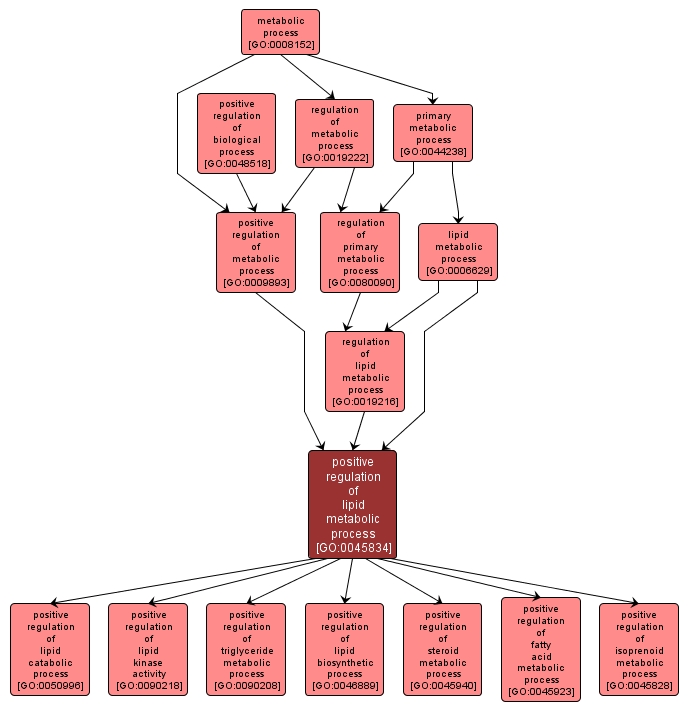GO TERM SUMMARY
|
| Name: |
positive regulation of lipid metabolic process |
| Acc: |
GO:0045834 |
| Aspect: |
Biological Process |
| Desc: |
Any process that activates or increases the frequency, rate or extent of the chemical reactions and pathways involving lipids. |
Synonyms:
- activation of lipid metabolic process
- up-regulation of lipid metabolic process
- positive regulation of lipid metabolism
- stimulation of lipid metabolic process
- upregulation of lipid metabolic process
- up regulation of lipid metabolic process
|
|

|
INTERACTIVE GO GRAPH
|














